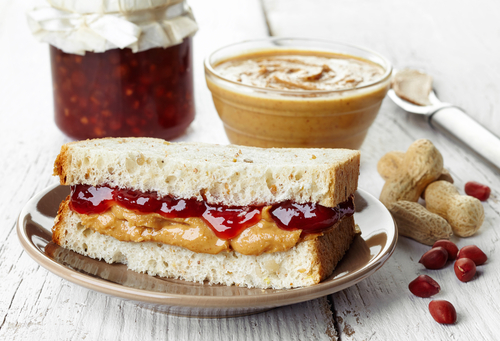Income investors seek a steady stream of dividends. JM Smucker’s dividend history is long and it might make a great addition to an income portfolio. Let’s take a look at the business, dividend history, and payout safety going forward.
Business Overview and Highlights
The JM Smucker Company was founded in 1897 by Jerome Monroe Smucker. The company produces jellies, jams, ice cream toppings, beverages, shortening, peanut butter, oils, and other food products.
Smucker’s (NYSE: SJM) is a $14 billion business. The company is based out of Ohio and it employs 7,000 people. Last year Smucker’s pulled in $7.4 billion in sales and that breaks down to $1.1 million per employee.
The company runs within the consumer sector and maintains a solid credit rating (BBB) from the S&P. This allows Smucker’s to issue cheap debt to grow the business and finance other initiatives.
Smucker’s last dividend was announced January 18. The board of directors declared $0.85 per share cash dividend which was made payable March 1 to shareholders of record on February 15.
Smucker’s 10-Year Dividend History
Smucker’s paid investors a special cash dividend of $5.00 per a decade ago which explains the spike around 2009. Since then, the dividend has steadily climbed from $1.60 to $3.12. That’s a 195% increase and you can see the annual changes below…
 Smucker’s has raised their dividend every year since 2002. The increase in dividend growth is a good sign. Smucker’s might work out as a great income investment. Let’s take a look at the yield…
Smucker’s has raised their dividend every year since 2002. The increase in dividend growth is a good sign. Smucker’s might work out as a great income investment. Let’s take a look at the yield…
Current Yield vs. 10-Year Average
Smucker’s long history of paying dividends makes it one of the best dividend stocks around. This also makes the dividend yield a great indicator of value. A higher yield is generally better for buyers. Sustainability is also vital, and we’ll look at that soon.
The dividend yield comes in at 2.73% and that’s below the 10-year average of 2.81%. The chart below shows the dividend yield over the last 10 years…
 The lower yield shows that investors have bid up the company’s market value. They might be expecting higher growth and payouts. But more often than not, the dividend yield is mean reverting with share price changes.
The lower yield shows that investors have bid up the company’s market value. They might be expecting higher growth and payouts. But more often than not, the dividend yield is mean reverting with share price changes.
Improved Dividend Safety Check
Many investors look at the payout ratio to determine dividend safety. They look at the dividend per share divided by the net income per share. So, a payout ratio of 60% would mean that for every $1 Smucker’s earns, it pays investors $0.60.
The payout ratio is a good indicator of dividend safety, but accountants can manipulate net income. They adjust for goodwill and other non-cash items. A better metric is free cash flow.
Here’s Smucker’s payout ratio based on free cash flow over the last 10 years…
 The ratio is volatile over the last 10 years. But the trend is down after a high payout ratio in 2009. The last reported year shows a payout ratio of 39.6%. This gives wiggle room for Smucker’s board of directors to raise the dividend.
The ratio is volatile over the last 10 years. But the trend is down after a high payout ratio in 2009. The last reported year shows a payout ratio of 39.6%. This gives wiggle room for Smucker’s board of directors to raise the dividend.
If you’re interested in seeing more dividend research, please comment below. You can also check out our free DRIP calculator. With it, you can uncover the power of dividend reinvestment growth.
Good investing,
Robert
